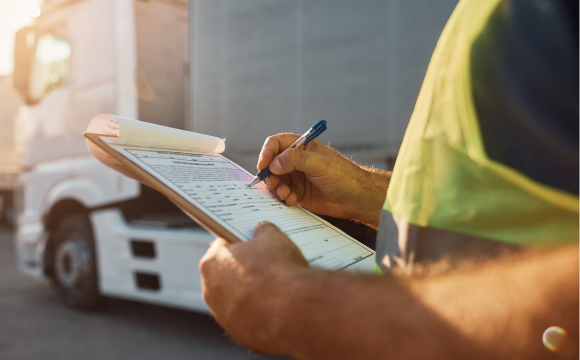- By TOP CHINA FREIGHT
- September 18, 2025
- Rail Freight, Shipping
Table of Contents
The freight train from China to UK offers a highly efficient solution for businesses seeking faster delivery than sea freight and lower costs than air transport. This rail network has become a key part of supply chains, providing a reliable alternative for importing electronics, machinery, textiles, and other goods.

What is the freight train from China to UK?
The freight train from China to UK is part of the China-Europe Railway Express. Major Chinese cities such as Chongqing, Wuhan, Xi’an, and Zhengzhou are connected to UK hubs, including London, Birmingham, and Manchester.
Distance & Coverage:
Over 10,000 km, crossing multiple countries and serving as a vital trade corridor.
Transit Time:
16–20 days, significantly faster than sea freight (30–45 days).
Environmental Advantage:
Lower carbon emissions than air freight, making it an eco-friendly choice.
Suitable Cargo:
Electronics, automotive parts, machinery, textiles, and high-value goods.
This system provides businesses with a dependable, cost-effective alternative to traditional shipping methods.
Why choose rail over sea and air freight?
Rail freight offers a balanced approach between speed and cost. Below is a comparison:
| Shipping Method | Average Cost | Transit Time | Best For | Pros | Cons |
|---|---|---|---|---|---|
| Air Freight | High | 5–10 days | Urgent, high-value cargo | Fastest, reliable schedules | Expensive, limited volume |
| Sea Freight | Low | 30–45 days | Bulk, heavy goods | Cheapest, large capacity | Slow, port congestion |
| Rail Freight | Medium | 16–20 days | General cargo, electronics, machinery | Cost-effective, eco-friendly, faster than sea | Limited capacity, fewer routes |
Rail freight is ideal for shippers needing faster delivery than sea shipping but at a fraction of air freight cost.
How long does a freight train take from China to UK?
Transit times depend on origin city, destination, and customs procedures. On average:
| Route | Transit Time |
|---|---|
| Xi’an – London | 17–19 days |
| Chongqing – Birmingham | 16–18 days |
| Wuhan – Manchester | 18–20 days |
| Zhengzhou – London | 19–21 days |
Trains maintain relatively consistent schedules, allowing businesses to plan inventory and minimize storage costs.
What is the cost of rail freight from China to UK?
Rail freight costs vary based on container size, cargo type, and destination. Approximate rates:
Though higher than sea freight, rail freight saves time and reduces warehousing costs, often offsetting the slightly higher transport fees.
What cargo is best suited for rail freight?
Rail freight is best for goods that benefit from a balance of cost and speed:
- Electronics and high-tech equipment
- Automotive components and machinery
- Textiles and clothing
- Pharmaceuticals (temperature-controlled options available)
- Consumer products and general merchandise
Hazardous, oversized, or perishable cargo may require additional planning and special permits.
What customs documents are needed for rail shipments?

Rail freight offers consistent schedules and fewer disruptions than sea freight. Advantages include:
- Fixed timetables with predictable arrival dates
- Advanced tracking systems providing real-time cargo updates
- Reduced congestion risk compared to major ports
- Environmentally friendly alternative to air freight
These factors make rail a dependable solution for businesses with time-sensitive shipments.
Pros and cons of rail freight
| Pros | Cons |
|---|---|
| Faster than sea freight (16–20 days) | Limited container capacity compared to sea |
| Lower cost than air freight | Fewer routes than sea or air |
| Eco-friendly, lower carbon footprint | Not suitable for all cargo types |
| Stable schedules and reliable transit | Border inspections may cause minor delays |
Considering these pros and cons helps businesses determine if rail freight fits their supply chain needs.
Case Study: UK Electronics Importer

A UK-based electronics distributor previously relied on sea freight from Shenzhen, taking up to 40 days for delivery. Switching to freight train from China to UK reduced transit to 18 days. Despite slightly higher transport costs, the distributor improved inventory turnover, reduced storage expenses, and increased product availability. This demonstrates the strategic advantage of rail freight for time-sensitive, high-value goods.
How should businesses plan rail freight shipments?
Limited train capacity means early reservations secure space.
Complete invoices, packing lists, and customs forms.
Durable packaging prevents damage during multiple handlings.
Track transit progress and potential border inspections.
Experts streamline logistics, manage customs, and optimize routes.
Conclusion
The freight train from China to UK is an effective solution for businesses seeking faster, reliable, and cost-efficient transport. With transit times of 16–20 days, predictable schedules, and eco-friendly benefits, rail freight bridges the gap between sea and air shipping. Companies transporting electronics, machinery, textiles, and high-value goods gain a strategic advantage by integrating rail freight into their supply chain, ensuring faster inventory turnover and stable operations.
Need a Shipping Quote?
If you want expert guidance and peace of mind, our team is ready to assist.
TJ China Freight offers tailored solutions to help businesses of all sizes ship more reliably from China.

FAQ
Q1:How frequently do freight trains run from China to UK?
Over 20 trains run weekly connecting major Chinese cities with UK hubs. Frequency depends on seasonal demand and route capacity.
Q2:Can small businesses use rail freight?
Yes. LCL (less-than-container load) allows smaller shipments to share space, making rail freight accessible to SMEs.
Q3:Are temperature-controlled containers available?
Yes. Refrigerated containers are available for pharmaceuticals, food, and other perishable items with prior booking.
Q4:Do border inspections cause delays?
Minor delays may occur, but accurate documentation and experienced freight forwarders reduce inspection risks.
Q5:Is rail freight environmentally friendly?
Yes. Rail freight has a significantly lower carbon footprint compared to air freight and is more sustainable than most transport methods.
